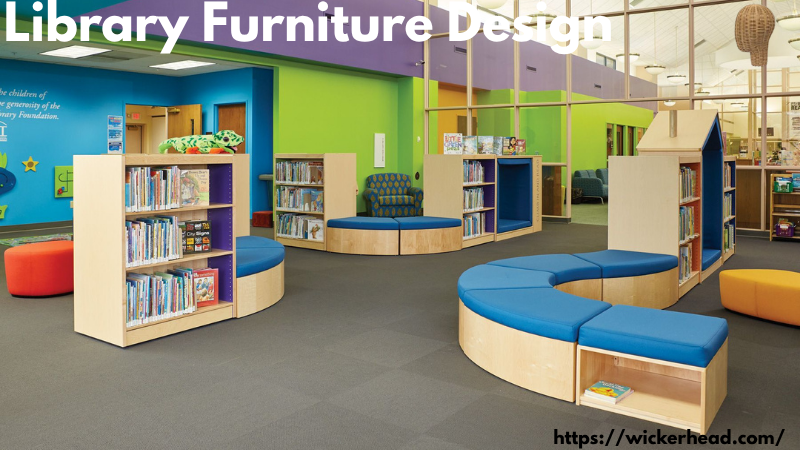Library furniture design plays a crucial role in shaping how people interact with knowledge. Whether it’s a public library, a campus study hall, or a cozy reading nook at home, furniture defines comfort, organization, and atmosphere. The right designs promote focus, accessibility, and aesthetic harmony. In this guide, we’ll explore how furniture choices impact library environments—and how to make smart, stylish selections that stand the test of time.
Table of Contents
1. The Foundations of Library Furniture Design
The core of any effective library space lies in its ability to balance storage, seating, and accessibility with thoughtful design.
Understanding Space Utilization
Library design begins with a spatial plan. Furniture should support open movement, quiet zones, and group collaboration areas without creating clutter or visual noise.
The Role of Ergonomics
Chairs, tables, and workstations must support long hours of reading or studying. Ergonomic furniture helps prevent fatigue, especially in student and academic settings.
Flexibility in Layouts
Modular furniture allows libraries to evolve with changing needs. Pieces that can be rearranged for events, group work, or exhibitions add long-term value.
Aesthetic Harmony
Design doesn’t stop at function. Materials, colors, and forms should complement the library’s architecture and promote a calm, inviting atmosphere.
2. Essential Furniture for Modern Libraries
While traditional libraries focused solely on shelves and reading desks, modern libraries demand diverse furniture types.
Shelving Units
Library shelving must be both accessible and sturdy. Adjustable shelves are ideal for housing different book sizes, while low-profile shelves help preserve sightlines in open areas.
Reading Tables
Large tables promote group study, while smaller desks support focused, individual work. Their placement influences traffic flow and noise levels.
Comfortable Seating
Upholstered chairs, lounge seating, and beanbags are now common in reading zones. They offer a cozy, informal alternative to rigid study chairs.
Workstations with Charging Access
With the rise of laptops and tablets, tables equipped with power outlets and USB ports are essential, particularly in academic libraries.
3. Children’s Library Furniture Design
Designing for young readers means prioritizing fun, comfort, and safety.
Low-Shelf Book Displays
Open-faced, low shelving units make books visible and accessible for kids, encouraging independent browsing and discovery.
Colorful Reading Nooks
Bright colors, soft seating, and themed furniture help create a playful environment where children feel excited about reading.
Kid-Friendly Tables and Chairs
Scaled-down furniture ensures comfort and safety. Rounded corners and durable finishes are a must for high-energy spaces.
Interactive Furniture
Incorporating puzzle tables or built-in games can blend learning with play, supporting early childhood development.
4. Study Zone Furniture for Quiet Focus
Designated quiet areas benefit from specialized furniture that supports deep concentration.
Sound-Absorbing Chairs
High-back lounge chairs with padded upholstery help dampen sound while providing privacy in open layouts.
Carrel Desks
These single-person study stations provide partial enclosures to reduce distractions and enhance focus.
Personal Lighting
Tables with built-in lamps or adjustable lighting improve visibility and comfort during long study sessions.
Dividers and Screens
Partitions made of acoustic or translucent materials help create semi-private spaces without isolating users completely.
5. Group Study and Collaboration Furniture
Group areas require flexible, functional furniture that supports discussion without disturbing others.
Modular Tables
Tables that can be connected or separated give students the flexibility to work solo or in teams as needed.
Whiteboard Tables
These surfaces allow groups to brainstorm directly on the table—perfect for interactive, team-based learning.
Moveable Chairs
Chairs with wheels or light frames allow users to reposition themselves easily without dragging or scratching floors.
Tech-Ready Pods
Some collaborative zones now feature semi-enclosed booths with screens, HDMI ports, and charging stations for digital presentations.

6. Furniture for Digital and Media Zones
Libraries have evolved beyond books to include digital labs and multimedia sections, demanding furniture suited for tech use.
Computer Workstations
These should be spaced out to maintain privacy. Ergonomic desks and chairs are especially important here due to extended screen time.
AV Furniture
Equipment like microphones, projectors, and screens require specialized stands and carts that are both functional and unobtrusive.
Charging Stations
Standalone furniture pieces with built-in charging capabilities help accommodate tech-savvy users on the go.
VR/Tech Labs
For cutting-edge libraries, consider open spaces with lightweight, mobile furniture for flexible media exploration.
7. Sustainable Library Furniture Design
Eco-conscious furniture choices not only reduce environmental impact but also support long-term durability.
Bamboo and Recycled Wood
Materials like bamboo and FSC-certified wood are sustainable and stylish alternatives to plastic or metal-heavy designs.
Low-VOC Finishes
Furniture finished with low-VOC (Volatile Organic Compounds) paints and sealants promotes indoor air quality.
Modular Systems
Choosing modular furniture allows for future expansion or replacement without waste, increasing the lifespan of the setup.
Locally Sourced Materials
Buying furniture from nearby artisans or manufacturers (like WickerHead.com) reduces the carbon footprint of transportation and supports local economies.
8. Library Furniture for Accessibility and Inclusion
Every reader should feel welcome and supported by thoughtful design.
ADA-Compliant Tables
Ensure table heights accommodate wheelchairs and mobility aids, with enough clearance for comfortable use.
Braille Labels and Book Stands
Integrating Braille or tactile elements on shelving and displays supports visually impaired readers.
Adjustable Furniture
Height-adjustable desks and flexible seating support people of different ages, sizes, and physical needs.
Inclusive Reading Zones
Designate calm corners for neurodivergent users who may benefit from reduced noise and visual stimulation.
9. Home Library Furniture Design Ideas
Creating a personal library space at home can be just as inspiring as a public one—with more room for personality.
Built-In Shelves
Custom-fitted shelves make the most of limited space and offer a polished, permanent look for your book collection.
Window Seating
A bench beneath a window surrounded by bookshelves creates a perfect cozy reading spot with natural light.
Ladder Shelves
Freestanding ladder-style shelves offer a stylish and mobile solution that doesn’t require wall installation.
Dual-Purpose Furniture
Think ottomans that store books, or fold-out desks that double as writing and laptop stations—ideal for small spaces.
10. Choosing the Right Supplier for Library Furniture
Where you buy your furniture impacts quality, support, and sustainability.
Custom Furniture Makers
Workshops and bespoke suppliers can create furniture tailored to your space, especially for home libraries or boutique institutions.
Eco-Conscious Brands
Explore curated, sustainable designs through sites like WickerHead.com, where craftsmanship meets environmental awareness.
Institutional Suppliers
For schools and public libraries, look to trusted institutional providers who specialize in long-lasting, high-use furniture.
Online Research and Reviews
Always check customer reviews, return policies, and warranty coverage before purchasing library furniture online.

FAQs About Library Furniture Design
1. What type of furniture is best for a quiet study area?
Carrel desks, ergonomic chairs, and acoustic panels are ideal for quiet areas that support individual focus and comfort.
2. How can I design a small home library?
Use vertical storage like built-in shelves or wall-mounted units. Add a reading chair and a lamp to define the space.
3. Is bamboo furniture good for libraries?
Yes, bamboo is lightweight, durable, and sustainable—perfect for eco-conscious library designs.
4. Where can I find modern library furniture online?
Platforms like WickerHead.com offer a range of modern, sustainable furniture pieces that work beautifully in libraries.
5. How do I make library spaces more inclusive?
Use accessible furniture, diverse seating styles, and multi-sensory elements like tactile signage and calming spaces.
Conclusion: Designing Better Spaces With Library Furniture Design
Library furniture design is more than arranging tables and shelves—it’s about creating spaces that inspire learning, foster comfort, and promote inclusion. Whether designing a public space, a campus study zone, or a home library, your choice of furniture shapes how people experience knowledge. With sustainable materials, smart layouts, and human-focused design, you can transform any library into a welcoming, future-ready sanctuary. For beautiful, functional furniture that complements your vision, visit WickerHead.com. And for deeper planning insights, check out this library design resource from the American Library Association.
